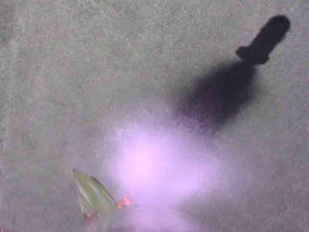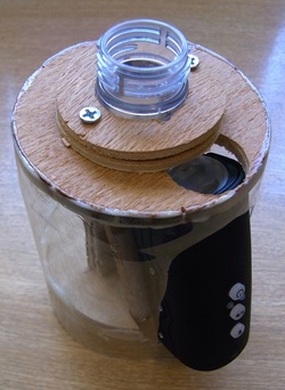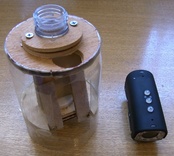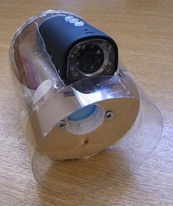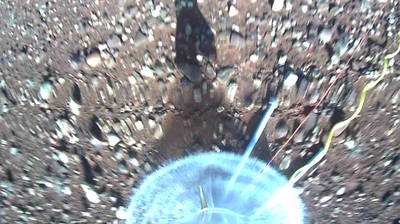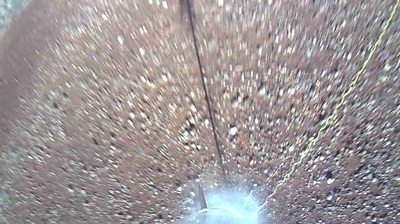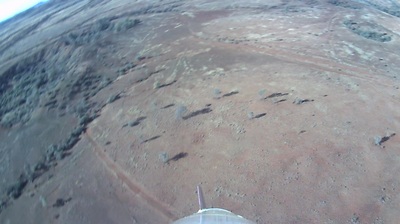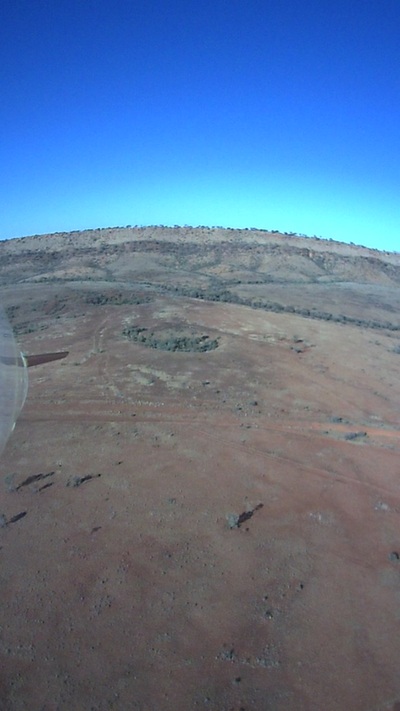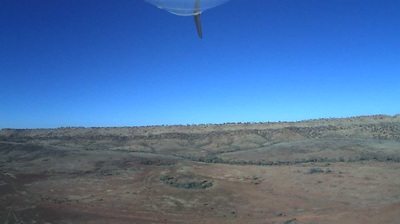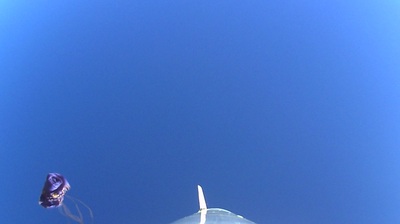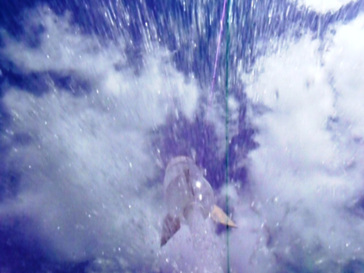
An interesting view which can be recorded by a waterproof camera from underneath the rocket.
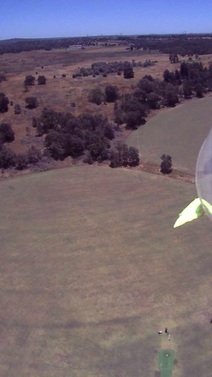
(Top) Pictures taken at Henbury Meteorite Craters, with some of the craters clearly visible from altitude. Launching a camera at a scenic location is a very enjoyable aspect of Onboard photography. Unfortunately the rocket was eager to add the the surrounding craters when it broke away from its parachute and crashed.
(left) Another of my favorite pictures of the bush land surrounding a local oval.
(left) Another of my favorite pictures of the bush land surrounding a local oval.
Highspeed Analysis
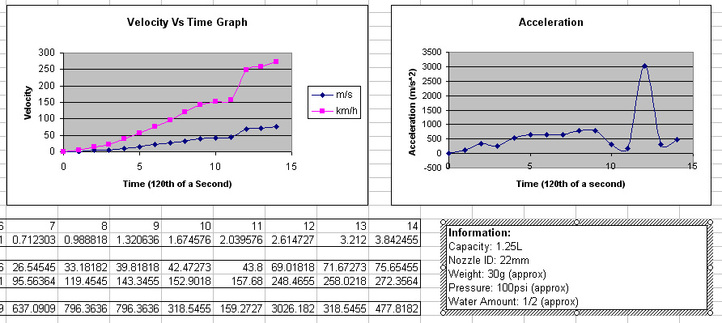
Highspeed Photography is not only great to watch but is quite useful for analising flight of a water rocket. By measuring the distance the rocket traveled on screen, I was able to work out its velocity. All this can be done in these Excel Spreadsheet, Download here.
Stages of Flight:
1: Accelerating on launch tube (shows how useful a launch tube is)
2: Accelerating on launch tube
3: A constant increase in velocity along launch tube
4: Accelerating without launch tube
5: Accelerating
6: Accelerating
7: Accelerating
8: Accelerating
9: Less water = More thrust
10: Waters peak thrust
11: Too much water
12: Accelerating with air only, peak acceleration (3026m/s^2 or 308g)
13: A constant increase in velocity
14: Reaching peak velocity (272kph)
Stages of Flight:
1: Accelerating on launch tube (shows how useful a launch tube is)
2: Accelerating on launch tube
3: A constant increase in velocity along launch tube
4: Accelerating without launch tube
5: Accelerating
6: Accelerating
7: Accelerating
8: Accelerating
9: Less water = More thrust
10: Waters peak thrust
11: Too much water
12: Accelerating with air only, peak acceleration (3026m/s^2 or 308g)
13: A constant increase in velocity
14: Reaching peak velocity (272kph)
